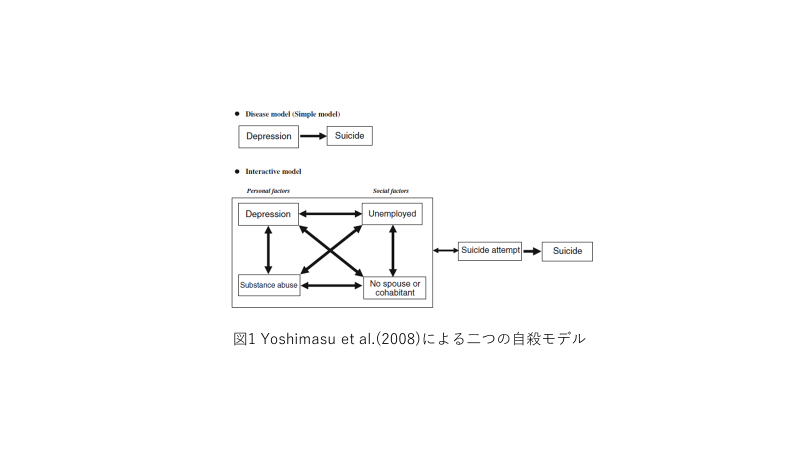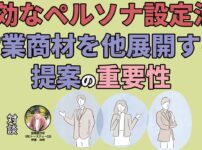- ①The current suicides in Japan
- ②The cause of child suicides
- ③Social ties, health, and death
- ④Loneliness of children
- ⑤Loneliness of children
- ⑥Conclusion: making social ties
- References
①The current suicides in Japan
The suicide deprives human beings from their possibility for the future. According to 'The suicide Prevention Reports' in Japan in 2018(the suicide reports published by the government), total suicide number was more than 20 thousands in 2017. Though this number the decreasing trend in Japan, suicide rates to total death rate is about 17%. The suicide number to 100 thousand people in Japan stands out, relative to French, Germany. Canada, United States, United Kingdom, and Italy(the Suicide Prevention Report, 2018). The main reason of the suicide is the economic problems, which is more outstanding than other causes. People whose family budget is tight tend to lose their living will and they get rid of their possibility for the future by themselves. While a researcher calculates the loss by suicides in Japan, these losses are so heavy that we cannot ignore the problem of suicides.
Recently, as the age of suicide attempt become lower, especially, the problem of child suicides under the 20 years old is very sensitive in Japan, In that report, the suicide rates of children is low, but consistent; it does not change from the start of research in that report. The first ranked cause of child death from 15-19 years old is the suicide: in 2017, 37% to total death. The suicide also is the second ranked cause of death from 10-14 years old: the first is cancer and the suicide is 16% to total death. The child suicide is consistent and it prevents children them from living for the future.
However, little is known about the cause of the child suicide. That report does not refer to anything and there are very few researches. The deprivation of social ties is the main factor to attempt suicides in adults(Shibata, 2014). Tompson, Grace and Cohen(2003), through their school experiences, pointed to 'the exclusion' as the most possible cause of child suicides. These two reports could result in that the deprivation of social ties, or loneliness, is the common and background factor of suicides. In this paper, with the bibliography, I suggest the relationship between the suicide and social exclusion.
スポンサーリンク
② The cause of child suicides
TV media often inform that the bullying causes child suicides under 20 years old. No doubt, van Geel, Vedder, and Tanilen(2014) showed the bullied children tend to attempt the suicide. In their article, the bullying in the internet correlates with the child suicide(van Geel et al., 2014).

But self-harm, suicide ideation, suicide attempt and depression are invested by many researchers(Boerger et al.,1998; Ougrin et al.2015; Usami, 2016). Yoshimasu et al.(2008) suggested that the disease model and the interactive model including adults and children. In this figure, the former model is that depressive trend relates to suicides, and the latter model raises two personal factors(depression and substance abuse)and two social factors(unemployed and no spouse or cohabitant). The interaction of these factors results in the suicide attempt. Yoshimasu et al.(2008) used meta-analysis to maintain the interaction model.
Although some research showed that the other factor in the child suicide, the common factor of the child suicide is "depression" and "self-harm". Ougrin et al.(2015) conduct meta-analysis to investigate the treatment effect on the suicide attempt and self-harm. In this research, the significant effect of the treatment is seen only in the integrative analysis of these, not in the separate analysis of them. The research of the child suicide may be too little to get significant results. But, they are major symptoms of depression. It is valid that the depression as the common factor of them is associated with the treatment effects. This interpretation fits the results of research by Usami(2016) and Boerger et al.(1998). Moreover, the factors in the research of Usami(2016) are related to "deprivation of social ties" and "loneliness". Therefore, I can suggest that just these two factors are the key cause of the child suicides.
スポンサーリンク
③ Social ties, health, and death
Usami(2008)'s meta-analysis and other research imply that the social ties and loneliness are background factors of child suicides. In this section, I examine the relationships among these two factors, the health, and the death.
Epidemiological studies showed that the negative influence of loneliness on well-being and death rates(Holt-Lunstad, Smith, and Layton, 2010;Steptoe, Shankar, Demakakos, and Wrdle, 2013). The social capital, defined by Robert Putnum, relates to the health and death(Hamano, Fujisawa, Ishida, Subramanian, Kawachi, and Shiwaku, 2010; Kawachi, 1997).
The deprivation of ties with other human and society and the loneliness connect to the death(Holt-Lunstad, Smith, and Layton, 2010). In recent meta-analysis, the loneliness directs with the death(Holt-Lunstad, Smith, and Layton, 2010), while it also with depression(Cacioppo et al., 2006; Qualter, Brown, Munn, and Rotenberg, 2010). These results are fit with the disease model and the interaction model.

But the mechanism of these relationship is not clear. In this figure showed by Murayama, Fujiwara, and Kawachi(2012), past research review model the effect of social capital on the health. Murayama et al. (2012) state the 4 factors and clearly showed the influence of social ties or loneliness on the death.
スポンサーリンク
④ Loneliness and Suicide
As figure 2 and the discussion, social ties and loneliness are associated with the health and death. The common factor in that two suicide models is the loneliness. I hypothesized that the loneliness relates to the suicide. Little is known about the interaction with them. Generally, suicides including adults have something to do with social ties and the loneliness(Desai, Dausey, and Rosenheck, 2005). People who have little social capital tend to have psychiatric disease(De Silva, McKenzie, Harpham, and Huttly, 2005). ALMP, which makes people get ties with the society, decrease the suicide(Shibata, 2014). Shibata(2014) analyzed the panel data in OECD countries from 1980-2000. The results showed that as the more the payment for ALMP, the more suicides decreased. To make people get social ties is the effective policy for suicide decreasing.
However, it is not evident why the loneliness connects to suicides. A few research showed the loneliness had the bad influence on the cognitive functions(Baumeister et al., 2005;Cacioppo & Hawkley, 2009; Xu et al, 2018). Xu et al.(2018) examined that the working memory performance of the participants who feel lonely strongly is lower than those who do not feel it so much. As loneliness lowers the self-control ability(Baumeister et al, 2005), some social distress prevents people from regulating suicides.
スポンサーリンク
⑤ Loneliness of children
The deprivation of social ties and the loneliness are not indifferent to children under 20 years old. Paker & Asher(1993) used sociometory to show that 20% of children in the school have no friend. These children feel more lonely than the children who are received by others(Parker & Asher, 1993).
The research of the relation between child suicide and loneliness unveils that the hopelessness and depression lead to the suicide. Given that two model, it is possible that 20%of children have the risk for suicides. Asher et al.(1984) showed that 10% of children have problem of humans and social relationship.
From these evidences, there are considerable children who have the unsatisfaction to social relationship and the loneliness. These distresses are the main risk factor of the suicide. Therefore, dealing with children feeling lonely decrease child suicides.
スポンサーリンク
⑥ Conclusion: making social ties
I suggest that the background factors of child suicides are the deprivation of social ties and the loneliness. Shibata(2014) showed that in adult, the policy making social ties decreased suicide rates. Moreover, much evidence, for example social capital, lead to the same conclusion. The important thing is that solving the problem of child loneliness decreases child suicides.
In this paper, the bibliography concludes that the prevention of child suicides is to make social ties or to soften the child loneliness. Sugimoto et al.(2014), through the bibliographic review of the child thanatopsis, showed that children have the same thanatopsis as adults. This research aims to investigate how children who have disease live good. The suggestion below is listened to with great interest.
"Children understand and feel their condition more than adult's imagination in their surrounding circumstances. They think deeply the life and death. If they express their angst for the death, we should not talk with them, but try to listen to their voices. Whenever they want to communicate with others, it is important that there are the environments to talk and the adult who can receive their distress."
When to deal with the child suicide, all they need is the system in which they can express their feelings with the specialists. Through these systems, we should make them social ties and soften their distress. This method is realistic and effective.
スポンサーリンク
References
Asher. Steven R, Hymel. Shelly, and Renshaw. Peter D. (1984). loneliness in Children. Child Development. Vol. 55, No. 4, 1456-1464.
Baumeister. Roy, DeWall. Nathan, Ciarocco. Natalie J., and Twenge Jean M. (2005). Social Exclusion Impairs Self-Regulation. Journal of Personality and Social Psychology. Vol. 88, No. 4, 589-604.
Boergers. Julie, Spirito. Anthony, and Donaldson. Deidre. (1998). Reasons for Adolescent Suicide Attempts: Associations With Psychological Functioning. Journal of the American Academy of Child & Adolescent Psychiatry. Vol. 37, No. 12, 1287-1293.
Cacioppo. John T, & Hawkley.Louise C. (2009). Percieved Social Isolation and Cognition. Trends in Cognitive Sciences. Vol. 13, No. 10, 447-454.
Cacioppo. John T, Hughes. Mary Elizabeth, Waite, Linda J, Hawkley. Louise C, Thisted. Ronald A. (2006). Loneliness as a Specific Risk Factor for Depressive Symptoms: Cross-Sectional and Longitudinal Analysis. Psychology and Aging. Vol. 21, No. 1, 140-151.
Desai. Rani A, Dausey. David J, and Rosenheck. Robert A. (2005). Mental Health Service Delivery and Suicide Risk: The Role of Individual Patient and Facility Factors. American Journal of Psychyatry. Vol. 162, No. 2, 311-318.
De Silva. Mary J, McKenzie. Kwame, Harpham Trudy, and Huttly. Sharon R A. (2005). Social capital and mental illness: a systematic review. journal of Epidmiological Community Health. Vol. 59, 619-627.
Fujiwara T & Kawachi I. (2008). A prospective study od individual-level social capital and major depression in the United States. Journal of Epidemiology Community Health. Vol. 62, 627-633.
Suicide Prevention Report平成30年度『自殺対策白書』
Hamano Tsuyoshi, Fujisawa Yoshikazu, Ishida Yu, Subramanian. S. V, and Kawachi Ichiro. (2010). Social Capital and Mental Health in Japan: A Multilevel Analysis. Plos one. Vol. 5, Issue. 10.
Holt-Lunstad. Julianne, Smith. Timothy B, and Layton. Bradly J. (2010). Social Relationship and Mortality Risk: A Meta-analytic Review. Plos MEDICINE. Vol. 7, 7.
Lasgaard. Mathias, Goosens. Lus, and Elklit. Ask. (2011). Loneliness, Depressive Symptomatology, and Suicide Ideation in Adolescence: Cross-Sectional and Longitudinal Analyses. Journal of Abnormal Child Psychology. Vol. 39, 137-150.
Kawachi Ichiro. (1997). Social Capital, Income Inequality, and Mortality. American Journal of Public Health. Vol.87, No. 9, 1491-1498.
Murayama. Hiroshi, Fujiwara. Yoshinori, and Kawachi. Ichiro. (2012). Social Capital and Health: A Review of Prospective Multilevel Studies. Journal of Epidemiology. Vol. 22, No. 3, 179-187.
Ougrin. Dennis, Tranah. Troy, Stahl. Daniel,Maran .Paul, and Asarnow. Joan Rosenbaum. (2015). Therapeutic Intervations for Suicide Attempts and Self-Harm in Adlescents: Systematic Review and Meta-Analysis. Journal of The American Academy of Child & Adlescent Psychiatry. Vol. 54, No. 2, 97-107.
Page. Randy M, Yanagishita Jun, Suwanteerangkul. Jiraporn, Zarco. Emilia Patricia, Mei-Lee. Ching, and Miao. Nae-Fang. (2006). Hopelessness and Loneliness Among Suicide Attempters in School-Based Samples pf Taiwanese, Philippine and Thai Adolescents. School Psychology International, Vol. 27, No. 5, 583-598.
Parker. Jeffrey G.& Asher. Steven R. (1993). Friendship and Friendship Quality in Middle Childhood: Links With Peer Group Acceptance and Feelings of Loneliness and Social Dissatisfaction. Developmental Psychology. Vol. 29, No. 4, 611-621.
Qualter. Pamela, Brown. Stephen L, Munn. Penny, and Rotenberg. Ken J. (2010). Childhood loneliness as a predictor of adolescent depressive symptoms: an 8-year longitudinal study. Eur Child Adolesc Psychiatry, Vol. 19, 493-501.
Shibata柴田 悠. (2014). 自殺率に対する積極的労働市場政策の効果―OECD26カ国1980~2007年のパネルデータ分析―. 社会学評論, Vol. 65, No. 1, 116-131.
Sugimoto et al. 杉本 陽子, 村端 真由美, 橋本 直子. (2014). 子どもの生と死の概念文献検討―病気をもつ子どもたちがより良く生きる援助のために―. Vol. 16, No. 1, 1-8.
Steptoe. Andrew, Shankar. Aparna, Demakakos. Panayotes, and Wardle. Jane. (2013). Social Isolation, loneliness, and all-cause mortality in older men and women. PNAS. Vol. 110, No. 5, 5797-5801.
Tompson et al. トンプソン M, グレース C O, コーエン L J. (2003). 『子ども社会の心理学 親友・悪友・いじめっ子』. 創元社.
Usami宇佐見 政英. (2016). 子どもの自殺関連事象の評価とその医療的介入. 児童青年精神医学とその近接領域, Vo. 57, No. 4, 568-576.
van Geel. Mitchel, Vedder. Paul, and Tanilon. Jenny. (2014). Relationship Between Peer Victimizasion, Cyberbullying, and Suicidein Children and Adlescents: A Meta-analysis. JAMA Pediatrics, Vol. 168, No. 5.435-442.
Xu. Mengsi, Qiao. Lei, Qi. Senqing, Li. Zhiai, Diao. Liuting, Fan. Lingxia, Zhang. Lijie, and Yang. Dong. (2018). Social exclusion weakens storage capacity and attentional filtering ability in visual working memory. Social Cognitive and Affective Neuroscience. Vol. 13, No. 1, 92-101.
Yoshimasu. Kouichi, Kiyohara. Chikako, Miyashita. Kazuhisa, and The Stress Research Group of the Japanese Society for Hygiene. (2008). Suicide risk factors and completed suicide: meta-analysises based on psychological autopsy studies. Environ Health Prev Med. 13, 243-256.
スポンサーリンク


